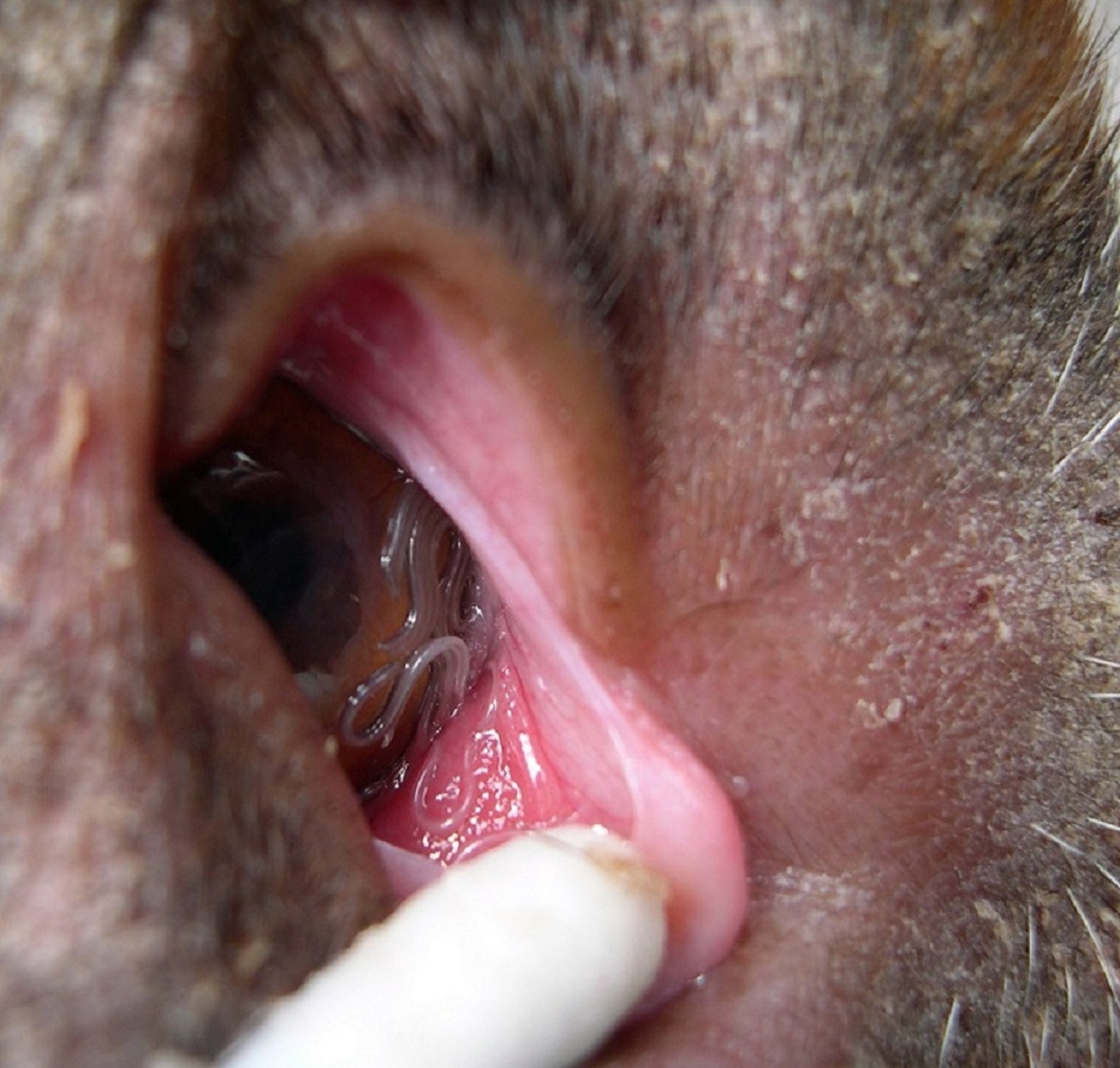Courtesy of Dr. Domenico Otranto.
The eyeworm Thelazia callipaeda is distributed in Europe and in many countries of Asia, whereas T californiensis is found in the western US. Both species localize on the surface of the eyes of the definitive hosts (for T callipaeda: dogs, foxes, cats, wolves, martens, badgers, lagomorphs, and humans; for T californiensis: dogs, cats, and deer) and may infest humans. Phortica variegata, the vector of T callipaeda, is a drosophila fly feeding on lacrimal secretions and displaying zoophilic behavior. The infection is transmitted when male flies harboring L3s feed on the eye of a suitable host. Adult nematodes may cause variable clinical signs, from mild inflammation, lacrimation, and a foreign-body sensation up to edema, corneal ulceration, conjunctivitis, and even blindness in heavy infections. Control strategies are focused on topical or systemic anthelmintic treatments, whereas the use of repellents is ineffective against the vectors.
T californiensis is found in dogs, cats, and deer in the western US; T callipaeda is found in dogs, cats, foxes, wolves, martens, badgers, and rabbits in Europe and Asia. Both species are zoonotic. T callipaeda appears to be spreading throughout Europe (with the exception of the UK, where only imported cases have been recorded). The worms are whitish, 7–19 mm long, and move in a rapid serpentine motion across the eye. As many as 100 eyeworms may be evident in the conjunctival sac, in tear ducts, and on the conjunctiva under the nictitating membrane and eyelids. Fannia spp serve as intermediate hosts of T californiensis and deposit infective larvae on the eye while feeding on ocular secretions. Zoophilic fruit flies are the intermediate hosts of T callipaeda. These include P variegata in Europe and P okadai in Asia.
Clinical signs of thelaziasis include excessive lacrimation and epiphora, ocular pruritus, conjunctivitis, keratitis with corneal opacity and ulceration, hyperemia, and rarely, blindness. After local anesthetic, diagnosis and treatment are readily accomplished by observing and removing the parasites with forceps. Thelazia spp infections have been successfully eliminated from dogs with administration of ivermectin at 0.2 mg/kg, SC; milbemycin oxime at a minimum dosage of 0.5 mg/kg, PO (two treatments 1 week apart improved efficacy); or spot-on treatment with 2.5% moxidectin. Administration of ocular solutions (1% moxidectin or 2% levamisole) or ointments (1% levamisole or 4% morantel) also may be effective, though they may cause irritation. Infection with T callipaeda has been prevented for the full season in dogs with administration of sustained-release moxidectin at 0.17 mg/kg, SC, with milbemycin oxime, PO, at the dosage recommended for heartworm prevention, and with ivermectin at 0.2 mg/kg, PO. Milbemycin oxime administered at the minimum oral dosage of 2 mg/kg showed high therapeutic efficacy in cats infected with T callipaeda.
For More Information

